Advertorial
As The Live-Action Rurouni Kenshin Comes to North American Cinemas, Explore The Epic's Real History!
by Funimation Entertainment (Paid Advertisement),
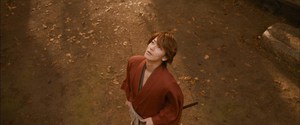 Rurouni Kenshin is one of the greatest historical adventures ever told. It chronicles the deeds of Himura Kenshin, a wandering swordsman in a fast modernising Japan, who was an assassin but now vows never to take another life. Many ANN readers will know Kenshin through the original manga by Nobuhiro Watsuki, or its subsequent anime adaptations. But now Kenshin's story is brought to radiantly colorful, brilliantly choreographed live action, in a trilogy of cinema films.
Rurouni Kenshin is one of the greatest historical adventures ever told. It chronicles the deeds of Himura Kenshin, a wandering swordsman in a fast modernising Japan, who was an assassin but now vows never to take another life. Many ANN readers will know Kenshin through the original manga by Nobuhiro Watsuki, or its subsequent anime adaptations. But now Kenshin's story is brought to radiantly colorful, brilliantly choreographed live action, in a trilogy of cinema films.
All three parts of the Rurouni Kenshin trilogy will have limited theatrical runs in the U.S. The first film, Rurouni Kenshin: Origins, will be shown on August 8, 9, and 10, and you can buy tickets today at funimationfilms.com/rurounikenshin. It will be followed by Rurouni Kenshin: Kyoto Inferno, the middle film, which introduces one of the most memorable villains in manga and anime, the fearsome Shishio Makoto. It will be shown on September 12, 13 and 14. The trilogy wraps up with Rurouni Kenshin: The Legend Ends, which will be shown at cinemas on October 3, 4 and 5.
Rurouni Kenshin takes place in a Japan which has seen unbelievable changes in just a few years. The main story takes place in the 1870s, but with flashbacks to the conflicts that shaped Japan's destiny. Until the mid-19th century, Japan was ruled by the Tokugawa Shogunate, a dynasty of dictators. But in 1853, history was changed forever when the so-called “black ships,” commanded by the American Matthew Perry, sailed intimidatingly to Japan's mainland. Perry's motive was to force Japan to open up to foreign trade. But he also triggered a series of events that led to civil war.
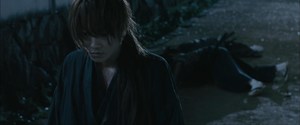 Called the Bakumastsu conflict, this war was waged between Japan's shogunate forces, who supported the long-established status quo, and rebels called the Ishin Shishi, who wanted a new kind of government. The Ishin Shishi employed an elite quartet of samurai, dubbed the “Hitokiri.” According to Rurouni Kenshin's backstory, the hero Himura Kenshin was once a Hitokiri, specifically the assassin Hitokiri Battousai. Although Kenshin is fictional, he's inspired by a very real historical figure, Kawakami Gensai, who was indeed a seasoned assassin and one of the four Hitokiri samurai.
Called the Bakumastsu conflict, this war was waged between Japan's shogunate forces, who supported the long-established status quo, and rebels called the Ishin Shishi, who wanted a new kind of government. The Ishin Shishi employed an elite quartet of samurai, dubbed the “Hitokiri.” According to Rurouni Kenshin's backstory, the hero Himura Kenshin was once a Hitokiri, specifically the assassin Hitokiri Battousai. Although Kenshin is fictional, he's inspired by a very real historical figure, Kawakami Gensai, who was indeed a seasoned assassin and one of the four Hitokiri samurai.
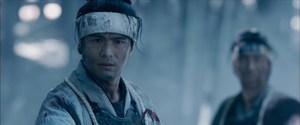 Rurouni Kenshin also shows the Hitokiri's opposite numbers, the Shinsengumi. Again, they were a very real group of elite swordsmen, formed into a special police force to protect the government. One of the Shinsengumi characters in Rurouni Kenshin is Hajime Saitou, pictured right. He was a real person too, and Rurouni Kenshin is one of several manga, anime and live-action films and TV series to depict him.
Rurouni Kenshin also shows the Hitokiri's opposite numbers, the Shinsengumi. Again, they were a very real group of elite swordsmen, formed into a special police force to protect the government. One of the Shinsengumi characters in Rurouni Kenshin is Hajime Saitou, pictured right. He was a real person too, and Rurouni Kenshin is one of several manga, anime and live-action films and TV series to depict him.
If you're interested in historical accuracy, then bear in mind that while the Shinsengumi are romanticised in fiction – after all, they're an elite band of badass swordsmen! – they were ruthless killers in reality. Then again, their enemies the Ishin Shishi were also ruthless, not to mention xenophobic. Staunchly anti-foreigner, they often terrorised people who supported either foreigners or the shogunate.
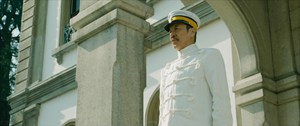 The Bakamatsu conflict ended in victory for the Ishin Shishi, and the fall of the shogunate. The Japanese Emperor, who for centuries had been an irrelevant symbol, now became ruler of Japan, with the political system consolidated under him. The Emperor at this time was Emperor Meiji; hence the restoration of imperial power after the shogunate's fall is called the Meiji Restoration, in 1868. Some Ishin Shishi figures rose up in the new government, including Yamagata Aritomo, who appears as a character in Rurouni Kenshin, pictured right.
The Bakamatsu conflict ended in victory for the Ishin Shishi, and the fall of the shogunate. The Japanese Emperor, who for centuries had been an irrelevant symbol, now became ruler of Japan, with the political system consolidated under him. The Emperor at this time was Emperor Meiji; hence the restoration of imperial power after the shogunate's fall is called the Meiji Restoration, in 1868. Some Ishin Shishi figures rose up in the new government, including Yamagata Aritomo, who appears as a character in Rurouni Kenshin, pictured right.
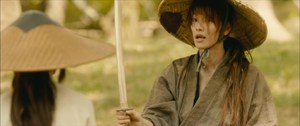 One irony of the Restoration is that it led to Japan westernising and modernising all the more - despite the Ishin Shishi's hatred of foreigners! The reason was that the new establishment realised it had to develop Japan's military and industry on Western lines. In doing so, the government decreed the samurai class was ended. In particular, people were no longer allowed to carry swords in public. But the samurai were stripped of much more than their swords; they also lost privileges that had been in their families for generations. That led to a surfeit of disgruntled, dangerous, jobless swordsmen.
One irony of the Restoration is that it led to Japan westernising and modernising all the more - despite the Ishin Shishi's hatred of foreigners! The reason was that the new establishment realised it had to develop Japan's military and industry on Western lines. In doing so, the government decreed the samurai class was ended. In particular, people were no longer allowed to carry swords in public. But the samurai were stripped of much more than their swords; they also lost privileges that had been in their families for generations. That led to a surfeit of disgruntled, dangerous, jobless swordsmen.
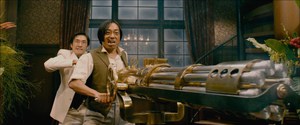 This is the background to Rurouni Kenshin. Swordsmen are still at large in Japan; not only will they cause trouble for Kenshin, but Kenshin himself is seen as a criminal by the authorities for carrying his own “sabakato” sword. New kinds of villain have appeared in the country, such as big-league drug smugglers – the domestic demand for opium has shot up since Japan opened to other nations. In Rurouni Kenshin: Origins, the villain Takeda Kanyru is introduced. We see he protects his opium empire with a Gatling gun, another dubious boon of trade and Westernization.
This is the background to Rurouni Kenshin. Swordsmen are still at large in Japan; not only will they cause trouble for Kenshin, but Kenshin himself is seen as a criminal by the authorities for carrying his own “sabakato” sword. New kinds of villain have appeared in the country, such as big-league drug smugglers – the domestic demand for opium has shot up since Japan opened to other nations. In Rurouni Kenshin: Origins, the villain Takeda Kanyru is introduced. We see he protects his opium empire with a Gatling gun, another dubious boon of trade and Westernization.
More broadly, many of Rurouni Kenshin's characters – good and bad, including Kenshin himself – have had their lives changed by the tumultuous events in Japan. Sometimes those lives have improved, but often they've been blighted. Bear that in mind… and then sit back in the cinema to enjoy this top-class samurai saga in a bold new form!
discuss this in the forum (4 posts) |
this article has been modified since it was originally posted; see change history